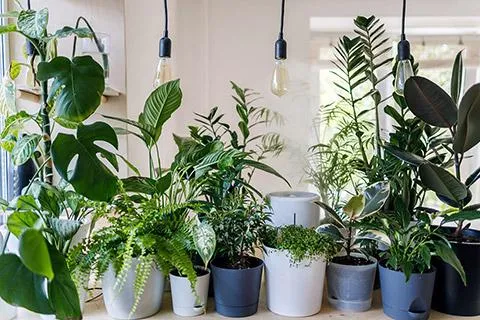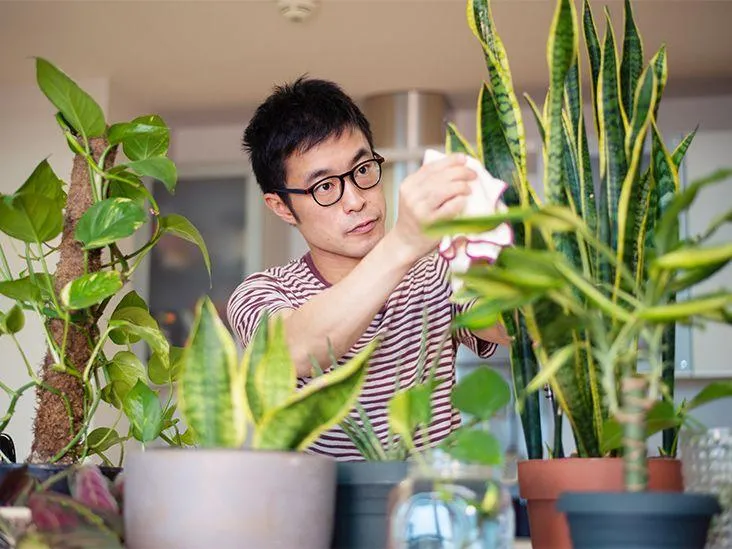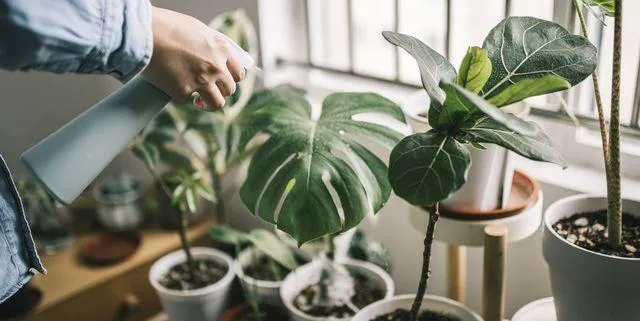The Best Indoor Plants to Add Life to Your Home
Whether you’ve got a black thumb or a green one, indoor plants can do wonders to spruce up your space and boost your mood. From my experience living with plants over the years, they have such a positive effect. Below are some top plant pics to consider that thrive with minimal care.
Plants That Are Nearly Impossible to Kill
- Zanzibar Gem: With its funky round leaves, this succulent is about as low maintenance as they come. Water it like once a month and you’re good! I left mine for like two weeks once and it survived, what a champ.
- Snake Plant: Nicknamed the “mother-in-law’s tongue” which cracks me up, this plant is practically indestructible. You could forget to water it for a month and it’ll still be kickin’. It thrives on neglect, so it’s perfect if you’re forgetful like me. Kind of a weird name though if you ask me!
- Pothos: With its heart-shaped leaves variegated in green and white, pothos looks awesome hanging or trailing. Don’t water it too much or too little, and it’ll be totally chill either way. My pothos is going like 5 years strong with bare minimum care.
Plants That Clean the Air
Adding plants to your home isn’t just for aesthetics—some species are excellent air purifiers. Their leaves absorb toxins like volatile organic compounds from off-gassing furniture and other sources. Win-win!
- Spider Plant: With its strappy green leaves and little spiderlet baby plants, this one looks cool too. Fun fact, it absorbs benzene, formaldehyde, and trichloroethylene which is pretty gnarly stuff. This plant has your back, cleaning up as it hangs out.
- Peace Lily: Its dramatic white flowers that kinda look like fireworks make for an eye-catching accent. Peace lilies are champs at removing mold spores, acetone, and toluene from indoor air. They’re sensitive to wet feet though so water carefully.
- English Ivy: Climbing ivy spilling over a bookshelf gives serious cottagecore vibes. It scrubs nitrogen dioxide and formaldehyde from air circulating through your space. Watch for pests on this one though, those suckers are hearty.
From my experience, having purifying plants is especially useful if you work from home or have hobbies like painting that release fumes. Their photosynthesis does work! At the same time, plants can catch dust and allergens in the air, so just brushing them sometimes is good hygiene.
Low-Light Beauties for Shady Spots
Not everyone has a sunny window or porch to show off plants. No sweat, these gals thrive in low light too.

- Chinese Evergreen: With its shiny green leaves trimmed in pink, white, or dark edges, Chinese evergreen freshens up a dim corner. I’ve got mine in my hallway and it’s putting out new growth even there.
- Spider Plant: As mentioned, spider plant cleans air while hanging out in low light. You can let its “spiderlettes” multiply to give as gifts too, how fun is that?
- Cast Iron Plant: Despite its name, this one likes medium to low light. I dare you to kill this thing—it survived under my stairs for a whole year with like one sunny window. Tough as nails!
Some people claim certain plants are “low maintenance” but really mean “low effort killing them” tbh. These specimens truly thrive with bare minimum care, even in darker spots. Whatever your lighting situation, there’s a plant buddy for you.
Consider Your Home’s Environment
While the plants above are famous for hardiness, your specific conditions matter too. Here are some factors to think about that could affect plant partner compatibility:
- Pets or young kids? Some lilies and tulips are toxic, so consider plants safe for little fingers.
- Central heating or air? Cacti and succulents prefer warmer temps, while ferns and peperomias thrive in humidity.
- Natural light? Choose plants that match your windows—east or west for direct sun, north for diffused light.
- Allergies? Consider low- pollen plants like sansevieria or english ivy if seasonal sniffles are a concern.
- Hard water? Calcium deposits can harm some plants, so softer water types may suit better.
Take a look at what stresses or helps other plants you’ve had to pick companions suited to your indoor jungle’s climate. A little research ensures plant parenthood success.
Ongoing Care Tips
No plant is truly zero-maintenance, but these basics require minimal effort:

- Water when top inch of soil is dry. Succulents accept less, others more. Those moisture meter thingies help avoid over- or under-watering.
- Mist foliage weekly for extra humidity loving the leaves to breathe. Peep the beads of water—so satisfying!
- Repot only when roots fill the container, usually every couple years. Use well-draining potting mix to avoid root rot.
- Fertilize in the spring and summer with a diluted liquid houseplant food to keep them healthy, like Miracle-Gro.
- Snip off any yellow or wilted leaves, and trim plants that get leggy so they stay full and bushy.
- Wipe leaves occasionally with a damp cloth to remove dust. Clean air is a two-way street!
Follow these simple routines and your plants will thrive. Watch for pests too—check undersides of leaves for critters. A little prevention goes a long way indoors.
With options for any care level, lighting, or space, I hope you find the perfect plant companions! Lemme know if you have any other gardening Qs. Peace out and happy planting!
Plants That Thrive Indoors
| Plant | Light Needs | Water Needs | Best Location |
|---|---|---|---|
| Pothos | Low | Let soil dry out between waterings | Anywhere out of direct sun |
| Succulents | Bright indirect light | Let soil dry out completely | Window sill |
| Snake plant | Low | Let soil dry out mostly | Anywhere |
| Chinese evergreen | Medium | Keep soil lightly moist | By a bright window |
| Peace lily | Medium | Keep soil moist | Near a window |
FAQ
-
What kinds of indoor plants are good for homes?
Basically, there are lots of great plant options that do well inside. Peace lilies, pothos, snake plants and philodendrons are some of the easiest houseplants to look after. They don’t need much sunlight or water to survive.
-
How often should indoor plants be watered?
It kinda depends on the type of plant. As a general rule, you’ll want to water when the top inch or two of soil is dry. But some plants, like spider plants, can go longer between drinks. The best way is to stick your finger in the soil and see if it’s moist. Perhaps get a moisture meter too – they’re super helpful!

-
Do indoor plants improve air quality?
Studies show that some common houseplants are amazing at removing toxins from the air. Pothos, peace lilies and spider plants can help filter out formaldehyde, benzene and trichloroethylene. Who knew my pothos could be stunning my lungs?! At the same time, don’t go overboard – a few plants won’t fully replace ventilation and open windows.
-
Can indoor plants be poisonous?
Sadly, yes – a small number of plants you find in stores can make you seriously ill if eaten. Lilies, ivy and dieffenbachia contain calcium oxalate crystals that can irritate skin and cause mouth pain. It’s best to look up whether a plant is poisonous or not. Asking an expert could save your life! Perhaps keep questionable plants out of reach of kids and pets, just to be safe.
-
How do I care for a plant if I go on vacation?
Don’t worry – your plant babies will be fine if you’re gone for a week or two. Water them beforehand and put some stones or gravel in the saucer to keep the soil moist longer. You could also ask a neighbor to pop by and check on them. Is that fair? Otherwise, consider a self-watering pot or water globe to supply water slowly while you’re away. Just don’t leave plants high and dry!
-
Why are some houseplants more expensive than others?
Rarity strongly influences plant prices. Unusual varieties, especially ones imported from exotic locales, tend to cost more. Size also matters – larger specimens will set you back extra. Nevertheless, plant popularity booms can jack up commonly available prices too. On the other hand, keep an eye out for plant sales. You can sometimes find gems for less money through local plant clubs or shops too.

-
What’s a good indoor potting mix for most plants?
A well-draining potting soil labeled for houseplants does the trick. Look for a blend of peat moss or coir, perlite and compost or worm casting. This allows air and water to circulate without becoming soggy. Maybe add some vermiculite or sand to dryer mixes. Check the bag for fertilizer too – many include a balanced amount. Strong, what do the experts say makes the perfect potting soil? I’m no botanist!
